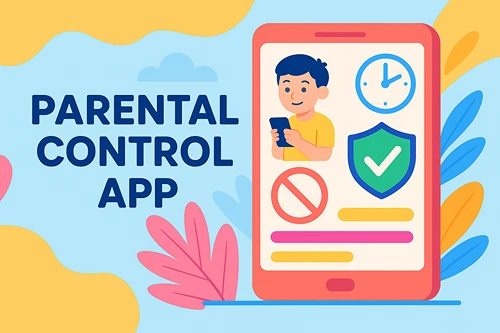In the Hot Seat: Why Today’s Educators Can’t Rely on Old Playbooks
What do you do when the school fire alarm rings and no one moves because they assume it’s another drill? That’s the reality for teachers today. Every week brings new surprises: tech failures, shifting policies, or late-night parent emails that read like legal documents. The job was always tough, but now it’s a high-pressure balancing act.
Traditional methods no longer cut it. Educators face burnout, behavior issues, tech overload, and rising expectations—all while tackling problems their training never covered. Therefore, it’s vital to will share why the old playbook no longer works, what today’s teachers are truly up against, and how the best are adapting without losing their passion.
The Ground Is Shifting Beneath Their Feet
Let’s be honest: if teaching was already difficult in the early 2000s, it’s now like performing live theater while the audience throws curveballs and critiques you in real time. Today’s classrooms are microcosms of national conversations—about equity, identity, mental health, digital safety, and more. Every social headline shows up eventually… in a student question or a parent phone call.
There’s also the tech elephant in the room. Smartboards, learning apps, LMS platforms, AI-powered grading tools. These were supposed to make life easier. But instead of lightening the load, many teachers now feel like tech support agents. Every update means something new to troubleshoot.
And then there’s the pace. Schools are pushing fast innovation without enough time to let teachers breathe, reflect, or recalibrate. If you’re still using the same teaching plan from 2018, chances are it feels like trying to connect an iPhone 15 to a VHS player.
That’s where retraining comes in. Not just the quick PD days with lukewarm coffee and a PowerPoint, but real, flexible learning paths designed for working teachers. For many, pursuing an M.Ed degree online has become a practical way to update their knowledge, meet new demands, and stay competitive in a field that’s changing fast. The flexibility of online programs allows educators to learn at their own pace, dig into emerging topics like trauma-informed practices or inclusive curriculum design, and immediately apply those insights to their current roles.
It’s not about collecting another credential just to hang on the wall. It’s about building a toolkit that actually works for the job you’re doing now—not the one you were trained for a decade ago.
Why the Old Tools Don’t Fit the New Problems
Remember when the phrase “classroom management” mostly referred to getting kids to stop passing notes or chewing gum? Now, teachers are dealing with anxiety, attention issues, and emotional outbursts that reflect deeper challenges students face at home and online. The traditional methods—like reward charts and detention slips—can feel wildly out of place.
Take behavior issues, for example. A student shutting down mid-lesson might not be “disrespectful.” They might be dealing with sensory overload or carrying stress from social media blowups the night before. You can’t punish that into submission. You need strategies rooted in emotional intelligence and trauma awareness.
Even curriculum delivery has changed. Teachers are expected to personalize learning, integrate tech, differentiate for ability levels, and make sure every lesson is culturally relevant—all without adding time to the school day. Old lesson plans, no matter how well they worked in the past, often feel like trying to patch a roof with duct tape.
Let’s also not forget how parent expectations have shifted. Families want real-time updates, instant responses, and custom solutions. If a child misses one assignment, the follow-up isn’t a simple “they’ll catch up next week.” It’s a detailed discussion about accommodations, grading policies, and educational equity. Teachers need better communication skills, boundary-setting techniques, and yes, patience levels that rival monks.
And then there’s the mental strain. In the past, educators could focus on just teaching. Now they’re expected to be mentors, counselors, tech troubleshooters, and community liaisons. The burnout is real—and it’s driving many to leave the field entirely.

The Educators Who Thrive Are the Ones Who Adapt
The best teachers today aren’t the ones who do everything perfectly. They’re the ones who pivot fast, stay open, and build communities around their growth.
They’re attending webinars, joining educator forums, and sharing lesson hacks on social media. They know which apps actually help and which ones are just digital noise. And they’ve stopped chasing perfection.
Instead of resisting new ideas, they test them. Instead of hiding struggles, they talk about them—with colleagues, online, or even in front of students when appropriate. There’s power in being transparent. Students can tell when you’re real with them, and it builds trust faster than any icebreaker activity.
Adaptability also means knowing when to ask for help. Whether it’s seeking out mental health support, mentoring newer teachers, or simply saying no to the 12th committee invitation of the semester, survival isn’t just about working harder. It’s about working smarter and protecting your bandwidth.
Another trend among the educators who seem to be thriving? They’re deeply connected to their “why.” They know what brought them into the classroom, and they protect that spark even when the work gets heavy. That might mean doing one creative project per month, spending extra time with a student who’s finally opening up, or just celebrating the small wins: a smile from a withdrawn student, a breakthrough moment in math, a thank-you note left on their desk.
These moments won’t solve the systemic issues in education. But they keep the day-to-day meaningful.
The Job Has Changed—So Should the Map
We’re not going back to how it was. And maybe that’s a good thing.
The world kids are growing up in looks wildly different from the one their teachers grew up in. So it makes sense that the adults guiding them need updated training, tools, and mindset shifts. Not just to teach better—but to feel grounded, empowered, and capable while doing it.
If you’re still relying on what worked 10 years ago, you’re probably feeling that gap. And no amount of nostalgia will bridge it. Teachers who invest in themselves, who stay curious, who build new maps for this new territory—they’re the ones who last.
And let’s be clear: “lasting” doesn’t mean suffering in silence. It means teaching with intention, adjusting when needed, and finding ways to protect your passion so it doesn’t burn out completely.
Because yes, the seat is hot. But some educators are turning up the heat in the best way—by refusing to stick to the same old game plan and choosing to rewrite the rules instead.






